First return of Dexters to Ireland
Re: First return of Dexters to Ireland
Well said, Duncan. Thank you.
A number of old reference books (1837-1920) attribute the source of the Suffolk Dun to Norwegian or Scandinavian Dun, which in turn are considered the basis for the Icelandic cattle. If these have been proven wrong, then I'm more than happy to withdraw the part of my comments that refer to the Icelandic cattle. There is still the need to get past the original colours found in the SD, and those all can be laid at the feet of conventional dominant dilute genes, partly by colour, and partly by inheritance. Also, with 'brown' animals in the USA NOT descended from Plover, I consider the original argument proven spurious--or at least proving that Plover was not the original (or only?) culprit.
Regarding the polled mutation: In the USA, a 12 month old heifer calf had horn cover but no core. The 'horn' was about 2" long, 1" wide by .5 inch deep, oval at the bottom, and crumpled and turned over at the top. They wiggled/rocked when handled. Somewhere I have pics of this. A gov't vet, a private practice vet, and several experienced cattlemen looked at her and all said she had scurs. If I remember correctly, the vets both put that in writing. The calf, and her sire and dam had samples taken and sent to a gov't lab for testing for parentage verification. The result came back that the parents of record were correct. The breeder's vet wrote a guarantee that he had dehorned both the dam and sire, and there wasn't a scur in sight. The owner lived in an area with very few cattle, and had excellent brand new fences. Later the stubs on the heifer fell off, and other very small horns grew in, these ones with cores. The heifer was sold on without papers, and is now lost. The prior generations were all horned cattle. I believe this was a true case of a mutation occurring, but I'm sure Duncan can tell us what his training says...
I don't kow about England (well, N. Ireland, Eire, and Scotland, too), but certainly in North America it is quite common for uninformed people to refer to dehorned animals as polled.
Louisa...hi. Haven't spoken with you for ages. It seems forever since I first visited you at Durham Uni...what...25 years ago...and you were looking at bones then, too. In your research, have you found any predilection for rounded points on pelvic girdles in dwarfs vs. nons? Just thinking that blaming Plover for funny shaped girdles seems a bit farfetched...and maybe the difference could be attributed to chondro, since the growth plates on the girdle are affected by this. Will you be following up on the comment?
The DCS has been upgrading for 88 years. Depending on which gossip one chooses to listen to, pretty well every single major breeder, and a lot of minor ones, are all devious, dishonest, and have registered ringers. While having an accurate registry is an obvious goal, on a genetic basis, is there any difference between a mis-registered animal eight or 10 generations back, and an upgraded one? In North America we have a small cadre of 'purity' people, where even 1/1024th potential not Dexter gene makes the animal a 'mongrel mutt'. I beleive there is a similar group with you. Not that long ago, someone approached me to ask what the 'correct' tone of dun was. In the US, there was even a move at one point to try to claim that the E+ gene in the US was a different one than that which arrived with Outlaw. At the DCS AGM in Devon a few years ago, one new member stood up and asked if the lovely Wm animals she'd just bought were really not true Dexters. Someone had warned her they weren't, as they no longer looked the same as the general population. I once did an article for the Aussies about genetic drift, and used Balksbury Rosemary and Marjoram as the examples, showing photos of descendants in two different herds, where both herds were based on the same two cows. Totally different looking animals because of the breeding selections made by the owners. It's all so silly.
I well remember Beryl writing a (for her) pretty direct rebuttle to comments made at the first Congress, where herds and owners were discredited left, right and centre. At the time, she said that she was just grateful that she was still alive to defend herself. Too bad these curent allegations surfaced when it's too late for her to deal with them. carol d.
A number of old reference books (1837-1920) attribute the source of the Suffolk Dun to Norwegian or Scandinavian Dun, which in turn are considered the basis for the Icelandic cattle. If these have been proven wrong, then I'm more than happy to withdraw the part of my comments that refer to the Icelandic cattle. There is still the need to get past the original colours found in the SD, and those all can be laid at the feet of conventional dominant dilute genes, partly by colour, and partly by inheritance. Also, with 'brown' animals in the USA NOT descended from Plover, I consider the original argument proven spurious--or at least proving that Plover was not the original (or only?) culprit.
Regarding the polled mutation: In the USA, a 12 month old heifer calf had horn cover but no core. The 'horn' was about 2" long, 1" wide by .5 inch deep, oval at the bottom, and crumpled and turned over at the top. They wiggled/rocked when handled. Somewhere I have pics of this. A gov't vet, a private practice vet, and several experienced cattlemen looked at her and all said she had scurs. If I remember correctly, the vets both put that in writing. The calf, and her sire and dam had samples taken and sent to a gov't lab for testing for parentage verification. The result came back that the parents of record were correct. The breeder's vet wrote a guarantee that he had dehorned both the dam and sire, and there wasn't a scur in sight. The owner lived in an area with very few cattle, and had excellent brand new fences. Later the stubs on the heifer fell off, and other very small horns grew in, these ones with cores. The heifer was sold on without papers, and is now lost. The prior generations were all horned cattle. I believe this was a true case of a mutation occurring, but I'm sure Duncan can tell us what his training says...
I don't kow about England (well, N. Ireland, Eire, and Scotland, too), but certainly in North America it is quite common for uninformed people to refer to dehorned animals as polled.
Louisa...hi. Haven't spoken with you for ages. It seems forever since I first visited you at Durham Uni...what...25 years ago...and you were looking at bones then, too. In your research, have you found any predilection for rounded points on pelvic girdles in dwarfs vs. nons? Just thinking that blaming Plover for funny shaped girdles seems a bit farfetched...and maybe the difference could be attributed to chondro, since the growth plates on the girdle are affected by this. Will you be following up on the comment?
The DCS has been upgrading for 88 years. Depending on which gossip one chooses to listen to, pretty well every single major breeder, and a lot of minor ones, are all devious, dishonest, and have registered ringers. While having an accurate registry is an obvious goal, on a genetic basis, is there any difference between a mis-registered animal eight or 10 generations back, and an upgraded one? In North America we have a small cadre of 'purity' people, where even 1/1024th potential not Dexter gene makes the animal a 'mongrel mutt'. I beleive there is a similar group with you. Not that long ago, someone approached me to ask what the 'correct' tone of dun was. In the US, there was even a move at one point to try to claim that the E+ gene in the US was a different one than that which arrived with Outlaw. At the DCS AGM in Devon a few years ago, one new member stood up and asked if the lovely Wm animals she'd just bought were really not true Dexters. Someone had warned her they weren't, as they no longer looked the same as the general population. I once did an article for the Aussies about genetic drift, and used Balksbury Rosemary and Marjoram as the examples, showing photos of descendants in two different herds, where both herds were based on the same two cows. Totally different looking animals because of the breeding selections made by the owners. It's all so silly.
I well remember Beryl writing a (for her) pretty direct rebuttle to comments made at the first Congress, where herds and owners were discredited left, right and centre. At the time, she said that she was just grateful that she was still alive to defend herself. Too bad these curent allegations surfaced when it's too late for her to deal with them. carol d.
Re: First return of Dexters to Ireland
Well said, Duncan. Thank you.
A number of old reference books (1837-1920) attribute the source of the Suffolk Dun to Norwegian or Scandinavian Dun, which in turn are considered the basis for the Icelandic cattle. If these have been proven wrong, then I'm more than happy to withdraw the part of my comments that refer to the Icelandic cattle. There is still the need to get past the original colours found in the SD, and those all can be laid at the feet of conventional dominant dilute genes, partly by colour, and partly by inheritance. Also, with 'brown' animals in the USA NOT descended from Plover, I consider the original argument proven spurious--or at least proving that Plover was not the original (or only?) culprit.
Regarding the polled mutation: In the USA, a 12 month old heifer calf had horn cover but no core. The 'horn' was about 2" long, 1" wide by .5 inch deep, oval at the bottom, and crumpled and turned over at the top. They wiggled/rocked when handled. Somewhere I have pics of this. A gov't vet, a private practice vet, and several experienced cattlemen looked at her and all said she had scurs. If I remember correctly, the vets both put that in writing. The calf, and her sire and dam had samples taken and sent to a gov't lab for testing for parentage verification. The result came back that the parents of record were correct. The breeder's vet wrote a guarantee that he had dehorned both the dam and sire, and there wasn't a scur in sight. The owner lived in an area with very few cattle, and had excellent brand new fences. Later the stubs on the heifer fell off, and other very small horns grew in, these ones with cores. The heifer was sold on without papers, and is now lost. The prior generations were all horned cattle. I believe this was a true case of a mutation occurring, but I'm sure Duncan can tell us what his training says...
I don't kow about England (well, N. Ireland, Eire, and Scotland, too), but certainly in North America it is quite common for uninformed people to refer to dehorned animals as polled.
Louisa...hi. Haven't spoken with you for ages. It seems forever since I first visited you at Durham Uni...what...25 years ago...and you were looking at bones then, too. In your research, have you found any predilection for rounded points on pelvic girdles in dwarfs vs. nons? Just thinking that blaming Plover for funny shaped girdles seems a bit farfetched...and maybe the difference could be attributed to chondro, since the growth plates on the girdle are affected by this. Will you be following up on the comment?
The DCS has been upgrading for 88 years. Depending on which gossip one chooses to listen to, pretty well every single major breeder, and a lot of minor ones, are all devious, dishonest, and have registered ringers. While having an accurate registry is an obvious goal, on a genetic basis, is there any difference between a mis-registered animal eight or 10 generations back, and an upgraded one? In North America we have a small cadre of 'purity' people, where even 1/1024th potential not Dexter gene makes the animal a 'mongrel mutt'. I beleive there is a similar group with you. Not that long ago, someone approached me to ask what the 'correct' tone of dun was. In the US, there was even a move at one point to try to claim that the E+ gene in the US was a different one than that which arrived with Outlaw. At the DCS AGM in Devon a few years ago, one new member stood up and asked if the lovely Wm animals she'd just bought were really not true Dexters. Someone had warned her they weren't, as they no longer looked the same as the general population. I once did an article for the Aussies about genetic drift, and used Balksbury Rosemary and Marjoram as the examples, showing photos of descendants in two different herds, where both herds were based on the same two cows. Totally different looking animals because of the breeding selections made by the owners. It's all so silly.
I well remember Beryl writing a (for her) pretty direct rebuttle to comments made at the first Congress, where herds and owners were discredited left, right and centre. At the time, she said that she was just grateful that she was still alive to defend herself. Too bad these curent allegations surfaced when it's too late for her to deal with them. carol d.
A number of old reference books (1837-1920) attribute the source of the Suffolk Dun to Norwegian or Scandinavian Dun, which in turn are considered the basis for the Icelandic cattle. If these have been proven wrong, then I'm more than happy to withdraw the part of my comments that refer to the Icelandic cattle. There is still the need to get past the original colours found in the SD, and those all can be laid at the feet of conventional dominant dilute genes, partly by colour, and partly by inheritance. Also, with 'brown' animals in the USA NOT descended from Plover, I consider the original argument proven spurious--or at least proving that Plover was not the original (or only?) culprit.
Regarding the polled mutation: In the USA, a 12 month old heifer calf had horn cover but no core. The 'horn' was about 2" long, 1" wide by .5 inch deep, oval at the bottom, and crumpled and turned over at the top. They wiggled/rocked when handled. Somewhere I have pics of this. A gov't vet, a private practice vet, and several experienced cattlemen looked at her and all said she had scurs. If I remember correctly, the vets both put that in writing. The calf, and her sire and dam had samples taken and sent to a gov't lab for testing for parentage verification. The result came back that the parents of record were correct. The breeder's vet wrote a guarantee that he had dehorned both the dam and sire, and there wasn't a scur in sight. The owner lived in an area with very few cattle, and had excellent brand new fences. Later the stubs on the heifer fell off, and other very small horns grew in, these ones with cores. The heifer was sold on without papers, and is now lost. The prior generations were all horned cattle. I believe this was a true case of a mutation occurring, but I'm sure Duncan can tell us what his training says...
I don't kow about England (well, N. Ireland, Eire, and Scotland, too), but certainly in North America it is quite common for uninformed people to refer to dehorned animals as polled.
Louisa...hi. Haven't spoken with you for ages. It seems forever since I first visited you at Durham Uni...what...25 years ago...and you were looking at bones then, too. In your research, have you found any predilection for rounded points on pelvic girdles in dwarfs vs. nons? Just thinking that blaming Plover for funny shaped girdles seems a bit farfetched...and maybe the difference could be attributed to chondro, since the growth plates on the girdle are affected by this. Will you be following up on the comment?
The DCS has been upgrading for 88 years. Depending on which gossip one chooses to listen to, pretty well every single major breeder, and a lot of minor ones, are all devious, dishonest, and have registered ringers. While having an accurate registry is an obvious goal, on a genetic basis, is there any difference between a mis-registered animal eight or 10 generations back, and an upgraded one? In North America we have a small cadre of 'purity' people, where even 1/1024th potential not Dexter gene makes the animal a 'mongrel mutt'. I beleive there is a similar group with you. Not that long ago, someone approached me to ask what the 'correct' tone of dun was. In the US, there was even a move at one point to try to claim that the E+ gene in the US was a different one than that which arrived with Outlaw. At the DCS AGM in Devon a few years ago, one new member stood up and asked if the lovely Wm animals she'd just bought were really not true Dexters. Someone had warned her they weren't, as they no longer looked the same as the general population. I once did an article for the Aussies about genetic drift, and used Balksbury Rosemary and Marjoram as the examples, showing photos of descendants in two different herds, where both herds were based on the same two cows. Totally different looking animals because of the breeding selections made by the owners. It's all so silly.
I well remember Beryl writing a (for her) pretty direct rebuttle to comments made at the first Congress, where herds and owners were discredited left, right and centre. At the time, she said that she was just grateful that she was still alive to defend herself. Too bad these curent allegations surfaced when it's too late for her to deal with them. carol d.
Re: First return of Dexters to Ireland
Carol D.
I had letters from Mandela, Gandi, the Pope and the Queen of England saying that a certain unnamed animal, which unfortunately is lost, had one horn in the centre of it's head. To pile misfortune on top of misfortune I have lost the letters.
I had letters from Mandela, Gandi, the Pope and the Queen of England saying that a certain unnamed animal, which unfortunately is lost, had one horn in the centre of it's head. To pile misfortune on top of misfortune I have lost the letters.
John O'Neill
Herd name: Kyleroe
Member Reference: 32802
Herd name: Kyleroe
Member Reference: 32802
Re: First return of Dexters to Ireland
Duncan,
as pointed out the polling types assosiated with the red poll are not all dominant in all combinations. Reread the posting about dominance.
Again of 730 registered Wood Magic animals only 13 are registered as horned.
Regarding trying to blame the register or mistaken breeders that is the expected smoke. If you address the animal referred to I will send you more. There are loads of them.
as pointed out the polling types assosiated with the red poll are not all dominant in all combinations. Reread the posting about dominance.
Again of 730 registered Wood Magic animals only 13 are registered as horned.
Regarding trying to blame the register or mistaken breeders that is the expected smoke. If you address the animal referred to I will send you more. There are loads of them.
John O'Neill
Herd name: Kyleroe
Member Reference: 32802
Herd name: Kyleroe
Member Reference: 32802
-
Louisa Gidney
- Posts: 859
- Joined: Mon Sep 05, 2005 11:00 am
- Contact:
Re: First return of Dexters to Ireland
Carol, it was indeed a long time ago but I'm now writing up.
Could John and Carol kindly define what they mean by "rounded points" in terms of ilial crest, ischial crest etc. Hook and pin are not terms I'm familiar with in the context of dry bones.
I should have enough pelves from short v. nonshort and Woodmagic v. everything else to test the proposition, also access to some Chillinghams as another unimproved breed for comparison.
Could John and Carol kindly define what they mean by "rounded points" in terms of ilial crest, ischial crest etc. Hook and pin are not terms I'm familiar with in the context of dry bones.
I should have enough pelves from short v. nonshort and Woodmagic v. everything else to test the proposition, also access to some Chillinghams as another unimproved breed for comparison.
Zanfara Dexters
Tow Law
Co. Durham
Tow Law
Co. Durham
-
Duncan MacIntyre
- Posts: 2372
- Joined: Tue Mar 30, 2004 12:38 am
- Location: Isle of Bute, Scotland, UK
Re: First return of Dexters to Ireland
"as pointed out the polling types assosiated with the red poll are not all dominant in all combinations" - Given the fact that the two Rookewood animals were steers we cannot look to descendants for evidence. So lets look at the siblings and half siblings - no evidence there of polling. Lets look at the recorded ancestors - no evidence there. So I conclude it is perfectly possible that they were not actually genetically polled.
"Again of 730 registered Wood Magic animals only 13 are registered as horned." This does not imply that 717 were polled. Recording of polled and horned is fairly recent. In the 1974 herdbook there are 7 births to Angus bulls, and one to a Red Poll. But there are no recorded polled calves, and there is no mention of horns on any birth recorded in the whole year.
"Reread the posting about dominance. " Why? What kind of dominance or partial dominance do you think has been hiding in the Woodmagic herd? Again looking at the 1974 herdbook, there are 94 hefers registerd, 23 have one Woodmagic parent, and 25 have two Woodmagic parent. Just what degree of partial dominance would be necessary to hide the gene in a closed herd which at one point in time was producing either one or both parents of more than 50% of the total calves registered?
Lets look at the time perspective - You are suggesting that Grinstead Plover carried a polled gene. Plover was born in 1954, last registered progeny in 1964
Godstone Esmeralda was born in 1984. She had 14 recorded offspring of which 6 were polled. This does not seem consistent with your theory of partial dominance.
The likelihood is that either a mutation occurred, or that a parent or grandparent was not correctly identified. It is not at all likely that a partially dominant form of polled gene hid itself for 30 years and then suddenly changed.
"Regarding trying to blame the register or mistaken breeders that is the expected smoke" - is that not just what you are suggesting happened with Grinstead Plover?
Duncan
"Again of 730 registered Wood Magic animals only 13 are registered as horned." This does not imply that 717 were polled. Recording of polled and horned is fairly recent. In the 1974 herdbook there are 7 births to Angus bulls, and one to a Red Poll. But there are no recorded polled calves, and there is no mention of horns on any birth recorded in the whole year.
"Reread the posting about dominance. " Why? What kind of dominance or partial dominance do you think has been hiding in the Woodmagic herd? Again looking at the 1974 herdbook, there are 94 hefers registerd, 23 have one Woodmagic parent, and 25 have two Woodmagic parent. Just what degree of partial dominance would be necessary to hide the gene in a closed herd which at one point in time was producing either one or both parents of more than 50% of the total calves registered?
Lets look at the time perspective - You are suggesting that Grinstead Plover carried a polled gene. Plover was born in 1954, last registered progeny in 1964
Godstone Esmeralda was born in 1984. She had 14 recorded offspring of which 6 were polled. This does not seem consistent with your theory of partial dominance.
The likelihood is that either a mutation occurred, or that a parent or grandparent was not correctly identified. It is not at all likely that a partially dominant form of polled gene hid itself for 30 years and then suddenly changed.
"Regarding trying to blame the register or mistaken breeders that is the expected smoke" - is that not just what you are suggesting happened with Grinstead Plover?
Duncan
Duncan MacIntyre
Burnside Dexters 00316
Burnside
Ascog
Isle of Bute
Burnside Dexters 00316
Burnside
Ascog
Isle of Bute
Re: First return of Dexters to Ireland
Louisa,
in your previous posting you said you have skeletons of a couple of Woodmagic bred cows, one is definitely non-short but is riddled with arthritis. What would you be basing your analysis on?
Not all Woodmagic individuals will have carried the Red Poll skeletal characteristics. Individuals will have taken characteristics from the Dexter part of their breeding.
The particular characteristic I was referring to was the height of the Tuber coxae in relation to the height of 6th lumbar vertebra. For a Dexter the hook (coxae) is at least as high as the back bone. In alot of WM animals it is lower. Here is a diagram with both common and scientific names for most bones. Hope this helps
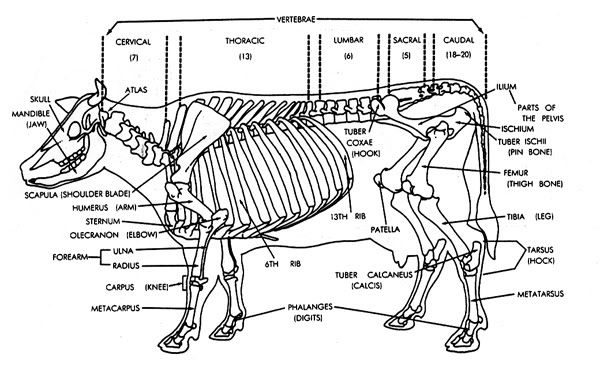
The following pictures intermix old dexters and animals with alot of WM blood



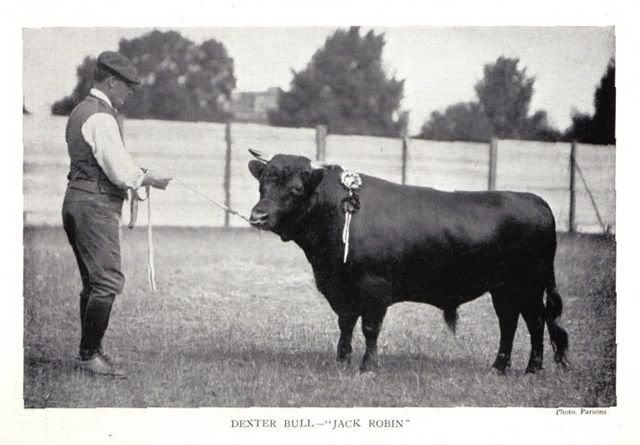
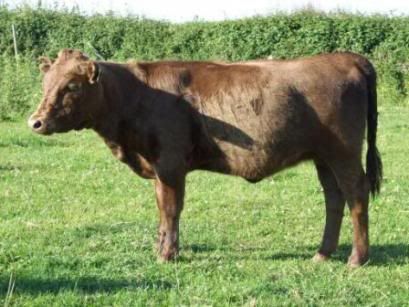
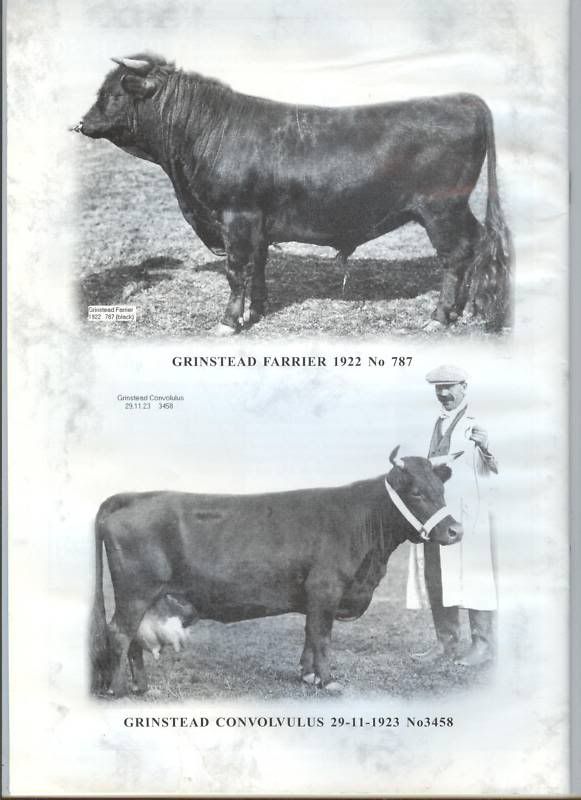
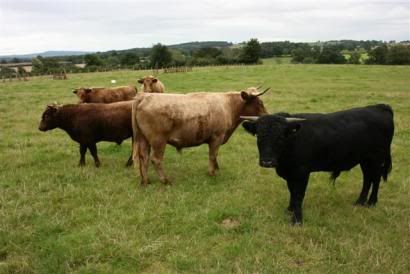


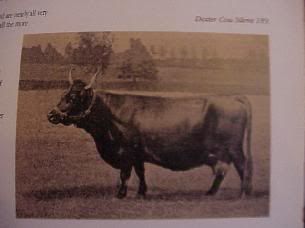
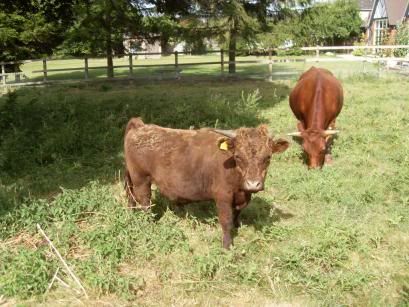

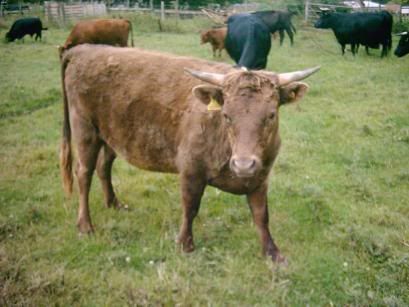

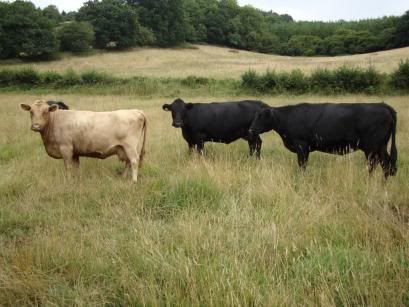
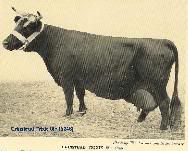
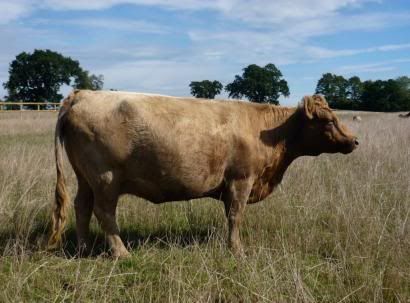
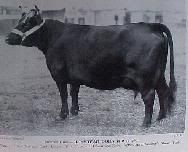
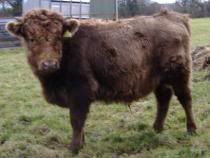
http://i1124.photobucket.com/albums/l57 ... e_herd.jpg
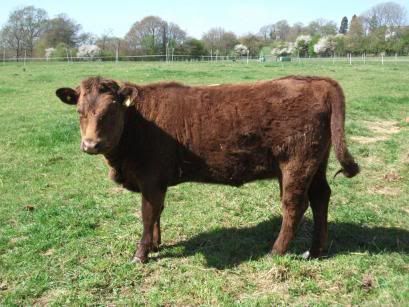

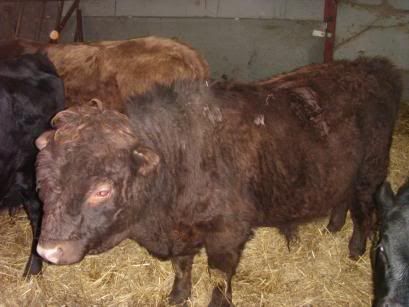
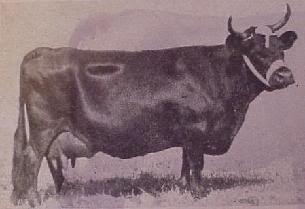
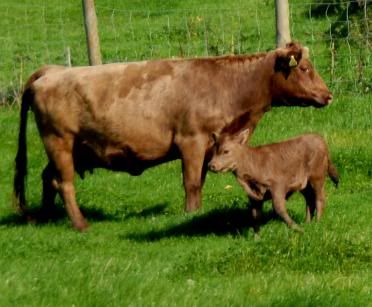
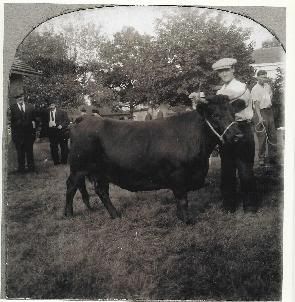
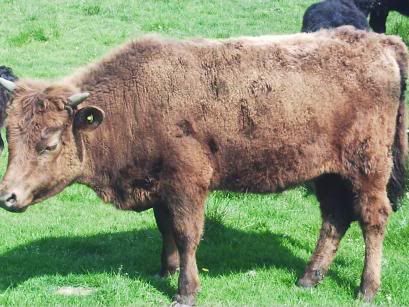
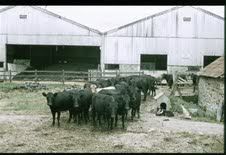
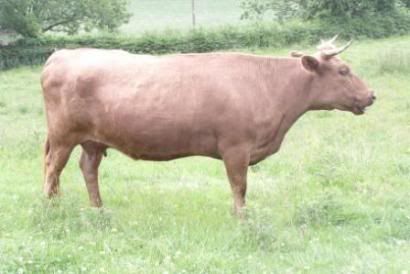
in your previous posting you said you have skeletons of a couple of Woodmagic bred cows, one is definitely non-short but is riddled with arthritis. What would you be basing your analysis on?
Not all Woodmagic individuals will have carried the Red Poll skeletal characteristics. Individuals will have taken characteristics from the Dexter part of their breeding.
The particular characteristic I was referring to was the height of the Tuber coxae in relation to the height of 6th lumbar vertebra. For a Dexter the hook (coxae) is at least as high as the back bone. In alot of WM animals it is lower. Here is a diagram with both common and scientific names for most bones. Hope this helps

The following pictures intermix old dexters and animals with alot of WM blood



















http://i1124.photobucket.com/albums/l57 ... e_herd.jpg









John O'Neill
Herd name: Kyleroe
Member Reference: 32802
Herd name: Kyleroe
Member Reference: 32802
-
Louisa Gidney
- Posts: 859
- Joined: Mon Sep 05, 2005 11:00 am
- Contact:
Re: First return of Dexters to Ireland
John, super selection of photos. I'm not sure I'll be able to help that much as my reference skeletons are all disarticulated dry bones and it will not be possible to determine the exact position of the ilium in relation to the lumbar vertebrae. I'll have a look and see if any other morphological character stands out. A colleague and I have just written a paper on age-related morphological change to the ilial-pubic acetabular border, so this would be a logical sequel.
Arthritis in dry bones is seen as exostoses, extra bone growth, round the edge of the affected joint combined with degeneration of the joint surface, pitting in the early stages, eburnation or polishing in more advanced cases. Archaeologically, common in the acetabulum or hip socket, metapodials and phalanges or foot and toe bones, less common in the knee or stifle joint, rare in the mandibular hinge.
I have yet to record the cow skeleton in question in detail but just looking in the top of the box, there is advanced eburnation on the acetabulum and mandibular hinge.
Arthritis in dry bones is seen as exostoses, extra bone growth, round the edge of the affected joint combined with degeneration of the joint surface, pitting in the early stages, eburnation or polishing in more advanced cases. Archaeologically, common in the acetabulum or hip socket, metapodials and phalanges or foot and toe bones, less common in the knee or stifle joint, rare in the mandibular hinge.
I have yet to record the cow skeleton in question in detail but just looking in the top of the box, there is advanced eburnation on the acetabulum and mandibular hinge.
Zanfara Dexters
Tow Law
Co. Durham
Tow Law
Co. Durham
-
wagra dexters
- Posts: 591
- Joined: Thu Mar 31, 2005 11:49 am
- Location: Australia
- Contact:
Re: First return of Dexters to Ireland
I am happy "these current allegations surfaced when it's too late for her to deal with them". Not the kind of stress Beryl needed towards the end, not that that would have stopped her explaining and defending her breeding decisions. She paid her dues and proved her worth to Dexter conservation many times over. No-one was ever more dedicated to conserving the Dexter for posterity; no-one ever more tenacious in her efforts to spread the word, world-wide, regarding the attributes of her precious ancient little Dexter. Beryl would be quite concerned, and take it very personally, that her beloved Woodmagic is being maligned now she has gone. Not just because they were hers but because they are Dexters.carol d wrote:I well remember Beryl writing a (for her) pretty direct rebuttle to comments made at the first Congress, where herds and owners were discredited left, right and centre. At the time, she said that she was just grateful that she was still alive to defend herself. Too bad these curent allegations surfaced when it's too late for her to deal with them. carol d.
Margaret
Graham Beever & Margaret Weir
http://www.wagra-dexter.com.au/
http://www.wagra-dexter.com.au/
Re: First return of Dexters to Ireland
Duncan,
it might help Louisa in choosing which characteristics to focus on if you were to put up pictures of the Wood Magic animals you recently bought.
It was you who pointed out that none of the 730 WM animals registered were registered as polled. The inference was that therefore they were all horned. As I pointed out for 717 of them it was not recorded whether they were horned, polled, scurred or had aborted horns.
You are now trying to build on this inference to say that there was a 30 year gap between plover and the spontanious eruption of polling. You need better foundations on which to build your folly.
In other breeds eg Irish Moiled polling is inconsistant and does not follow the textbook patern of dominance .
I have no interest in blame just the truth and useful data to help breed back Ireland's native breed to something like the ones that roamed the hills in the west. It concerns me to have the blood of a breed evolved for the very different conditions of Eastern England. The focus is on Plover because his blood was concentrated in the WM herd and spread from there across the breed. I am not aware of any other animal, whose purity is questioned, which has had such an influence on the breed.
This debate is great and such an advance on scripts about spider legged dexters and mockings of true short legs.
Have you done any scientific research or analytical research on dexters? I have not found anything to date published by you ( save the Bulletin) but I have had to listen to your devaluing of others hard work and expressed intellect .
Well no evidence at all to suggest that the Magic herd was not heavily influenced by introgression just more evidence in support. Many thanks for that .
Would you like some more polled animals where the register or the breeder was mistaken?
7 of the 8 greatgrandparents of the bull in the first picture have Plover blood. The bull in the second picture is Red Poll
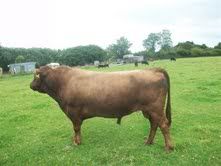

it might help Louisa in choosing which characteristics to focus on if you were to put up pictures of the Wood Magic animals you recently bought.
It was you who pointed out that none of the 730 WM animals registered were registered as polled. The inference was that therefore they were all horned. As I pointed out for 717 of them it was not recorded whether they were horned, polled, scurred or had aborted horns.
You are now trying to build on this inference to say that there was a 30 year gap between plover and the spontanious eruption of polling. You need better foundations on which to build your folly.
In other breeds eg Irish Moiled polling is inconsistant and does not follow the textbook patern of dominance .
I have no interest in blame just the truth and useful data to help breed back Ireland's native breed to something like the ones that roamed the hills in the west. It concerns me to have the blood of a breed evolved for the very different conditions of Eastern England. The focus is on Plover because his blood was concentrated in the WM herd and spread from there across the breed. I am not aware of any other animal, whose purity is questioned, which has had such an influence on the breed.
This debate is great and such an advance on scripts about spider legged dexters and mockings of true short legs.
Have you done any scientific research or analytical research on dexters? I have not found anything to date published by you ( save the Bulletin) but I have had to listen to your devaluing of others hard work and expressed intellect .
Well no evidence at all to suggest that the Magic herd was not heavily influenced by introgression just more evidence in support. Many thanks for that .
Would you like some more polled animals where the register or the breeder was mistaken?
7 of the 8 greatgrandparents of the bull in the first picture have Plover blood. The bull in the second picture is Red Poll


John O'Neill
Herd name: Kyleroe
Member Reference: 32802
Herd name: Kyleroe
Member Reference: 32802
Re: First return of Dexters to Ireland
JohnO, It would be helpful if you would let on just what you would like us to learn from the last two bull pictures. Thanks, marion
Marion Cdn.
-
wagra dexters
- Posts: 591
- Joined: Thu Mar 31, 2005 11:49 am
- Location: Australia
- Contact:
Re: First return of Dexters to Ireland
John, if you wouldn't mind, could you please itemise all the evidence that supports your theory that Grinstead Plover was not the offspring of two Dexter parents, and list it as scientific, documentary, anecdotal, hypothetical, and also generational word-of-mouth if there is any.
Margaret
Margaret
Graham Beever & Margaret Weir
http://www.wagra-dexter.com.au/
http://www.wagra-dexter.com.au/
Re: First return of Dexters to Ireland
Hi All 
Looks like the fires gone out and the mirrow is broken.
No more "Smoke and Mirrows"
Looks like the fires gone out and the mirrow is broken.
No more "Smoke and Mirrows"
-
wagra dexters
- Posts: 591
- Joined: Thu Mar 31, 2005 11:49 am
- Location: Australia
- Contact:
Re: First return of Dexters to Ireland
My request is genuine. I certainly hope it did not sound too challenging or confronting. I like to collect all kinds of stuff about Dexters and did not expect that notes could be collated quickly.
Graham Beever & Margaret Weir
http://www.wagra-dexter.com.au/
http://www.wagra-dexter.com.au/
Re: First return of Dexters to Ireland
There have been several references to the Breed standard and alterations to it in the past. Amongst the new 'Bye Laws' being proposed for adoption at the AGM is the Breed Standard. This means that in the future no alteration can be made without the approval of members at a General meeting.
Bye laws can be read on the Society website
Ian
Bye laws can be read on the Society website
Ian
Joan and Ian Simpson
Pennielea Farm
Glenavy
Co Antrim
Pennielea Farm
Glenavy
Co Antrim